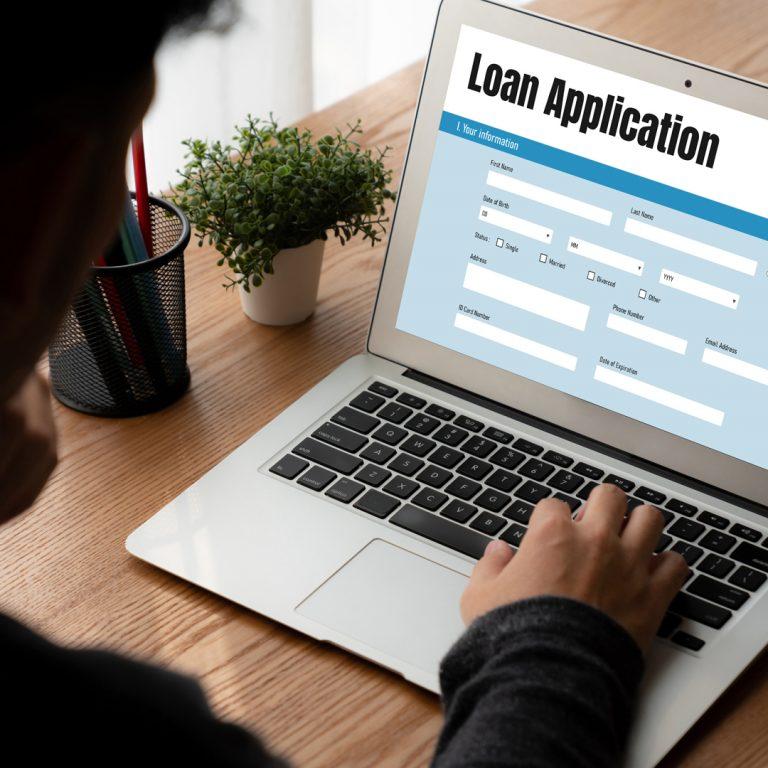Even though a mortgage is an installment loan used to purchase a home and a home equity line of credit (HELOC) is a revolving credit secured by your home’s equity, the process for applying for these distinct types of financing is surprisingly similar. Learn what information and documents you’ll need to provide in either case, plus what happens next.
What information is required for mortgage and HELOC applications?
With most institutions, you can complete and submit an application for a mortgage or HELOC online, over the phone or in person at a local branch. All lenders use the same standardized Uniform Residential Loan Application (URLA, or 1003 form) for mortgages. HELOC applications may vary, but they capture much of the same information, which includes the following about yourself and any co-borrower (such as a spouse):
- Identification: Name, date of birth, social security number and driver’s license number.
- Contact details: Home address and telephone number.
- Loan request: The amount you’d like to borrow in a mortgage or HELOC.
- Property value: The purchase price for a mortgage or a current market estimate for a HELOC.
- Employment: Employer’s name and contact information, plus a job title.
- Income: Monthly income from jobs, child support, alimony and real estate holdings.
- Assets: A list of all bank and investment accounts, including checking, savings, term, brokerage, 401(K) and IRA accounts, and their balance.
- Expenses and liabilities: An estimate of monthly expenses, plus a list of liabilities (e.g., credit cards and student or vehicle loans) along with their outstanding balance, monthly payment and the months remaining for term loans.
With a mortgage, you also typically need to indicate the source of your down payment, whether that’s from your savings or it’s being provided by someone else. With a HELOC, expect to provide information regarding your current mortgage, such as the lender and its current balance, and the name of your homeowners insurance company and your policy’s coverage limits.
What documents are needed for mortgage and HELOC applications?
When you submit your mortgage or HELOC application, be prepared to provide copies of the following documents so your lender can verify the information in these categories:
- Identification: A government-issued photo ID, such as your driver’s license.
- Employment and income: Paystubs for the last 30 days, along with W-2s and tax returns for at least the last two years. If you’re self-employed, you typically need to provide documents that show stable income, such as your business’ profit and loss statement and balance sheet.
- Divorce: The court decree indicating alimony or child support due to you or owed by you.
- Assets: Two to three months of checking and savings account statements.
- Down payment source: A gift letter if a family member or friend is contributing to your down payment, and/or recent statements of investment accounts if they’re the source.
Additionally, you will need to share a signed copy of the purchase agreement for a mortgage application. As for a HELOC, copies of these particular documents are needed:
- Homeowners insurance declaration page
- Latest property tax bill
- Most recent mortgage statement detailing your outstanding balance and how much of your monthly payment goes to principal and interest, property taxes, homeowners insurance and private mortgage insurance (PMI)
- Flood insurance declaration if your home is located in a flood zone
What is the mortgage and HELOC approval process?
Within three business days of submitting your application, lenders are required to provide you with a Loan Estimate (required only for a first mortgage or a fixed HELOC), which outlines the key conditions and estimated costs of your mortgage or HELOC. For a variable rate HELOC (like Quorum’s), lenders are required to provide the following disclosures (also within three days):
- HELOC – Important Terms Disclosure
- Homeownership Counseling Acknowledgement
- Homeownership Counseling Organization List
- Credit Score Disclosure Exception for Loans Secured By 1-4 Units of Residential Real Property
- What you Should Know About a Home Equity Line of Credit
During this time, lenders also begin underwriting your application, which includes the following :
- Verifying your employment, income, assets and, for mortgages, your down payment source
- Pulling your credit score and credit report to gauge the likelihood you’ll repay your debt
- Ordering an appraisal to confirm the home’s value
- Determining your loan-to-value (LTV) or combined loan-to-value (CLTV), for a mortgage or a HELOC, respectively (80% or less is considered good for LTV and 85% or less for CLTV)
- Calculating your debt-to-income (DTI) ratio to understand your ability to repay given your current income and debt obligations (36% or less is considered good)
- Performing a title search to confirm the legal owner of the property is either the seller (mortgages) or you (HELOCs)
What happens after you’re approved for a mortgage or a HELOC?
Once you’re approved, your lender schedules a loan closing and provides you with a Closing at least three business days prior to its date for a first mortgage; for a HELOC, a HUD-1 Settlement Statement is provided prior to closing. Both outline the final terms of your mortgage or HELOC and indicates any funds you need to bring to closing and what funds will be paid out during it and to whom, e.g., the seller of your new home and/or their mortgage lender during your mortgage closing.
At the closing, you’ll sign the Closing Disclosure and other documents, such as these:
- Initial Escrow Statement (mortgages only), indicating how much the lender will take from your escrow fund in the first year of your new mortgage for property taxes, homeowners insurance , potentially, PMI
- Deed, shows the transfer of ownership from the seller to you
- Deed of Trust, outlining the terms of the debt
- Promissory Note, indicating your promise to repay the (some lenders, like Quorum, will not issue a promissory note and include this in the HELOC agreement, below), and indicates your promise to repay the debt
- Any other state or locally mandated or lender-specific documents
- Notice of the Right to Cancel, informs you of your right to cancel your loan within three business days
If you’re planning on applying for a mortgage or a HELOC sometime soon, adopting some simple finance hacks will improve your credit score and/or your DTI ratio, increasing the likelihood you’ll be approved. This includes building and sticking to a budget so that you live within your means rather than relying on credit cards, specifically designating money in your budget to pay down any existing credit card balances and paying all your bills on time.







Comments Section
Please note: Comments are not monitored for member servicing inquiries and will not be published. If you have a question or comment about a Quorum product or account, please visit quorumfcu.org to submit a query with our Member Service Team. Thank you.